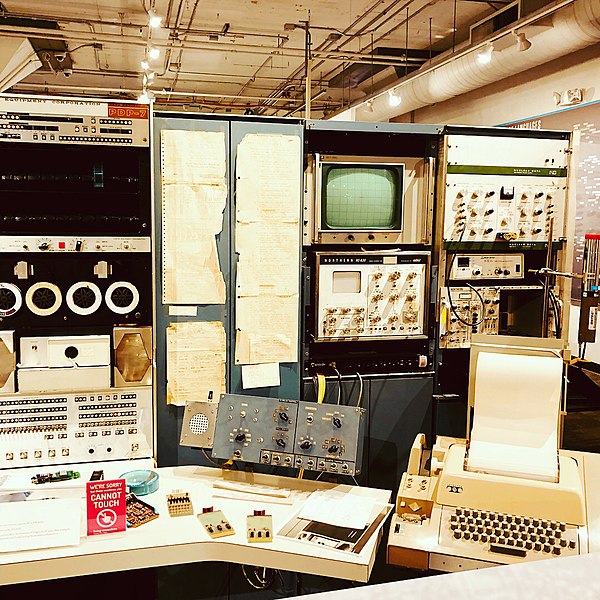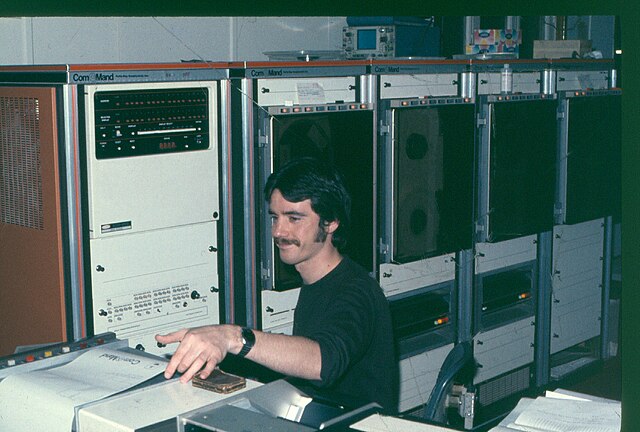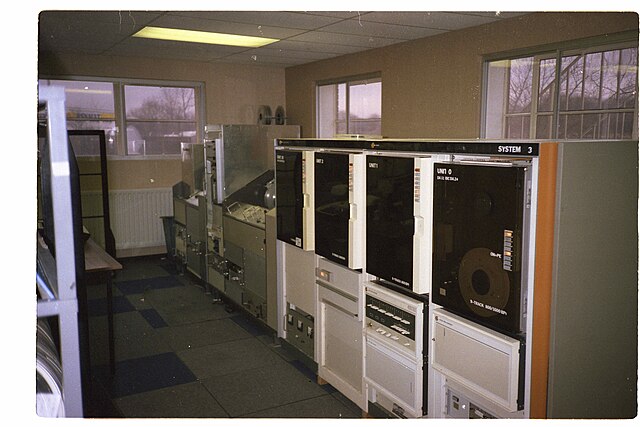The PDP-7 is an 18-bit minicomputer produced by Digital Equipment Corporation as part of the PDP series. Introduced in 1964, shipped since 1965, it was the first to use their Flip-Chip technology. With a cost of US$72,000, it was cheap but powerful by the standards of the time. The PDP-7 is the third of Digital's 18-bit machines, with essentially the same instruction set architecture as the PDP-4 and the PDP-9.
A modified PDP-7 under restoration in Oslo, Norway
Modified PDP-7 under restoration in Oslo, Norway
PDP-7 at living computer museum
A minicomputer, or colloquially mini, is a type of smaller general-purpose computer developed in the mid-1960s and sold at a much lower price than mainframe and mid-size computers from IBM and its direct competitors. In a 1970 survey, The New York Times suggested a consensus definition of a minicomputer as a machine costing less than US$25,000, with an input-output device such as a teleprinter and at least four thousand words of memory, that is capable of running programs in a higher level language, such as Fortran or BASIC.
Six different minicomputers (out of many more models) produced by the Digital Equipment Corporation (DEC) with the year of introduction in brackets: First row: PDP-1 (1959), PDP-7 (1964), PDP-8 (1965); second row: PDP-8/E (1970), PDP-11/70 (1975), PDP-15 (1970).
Data General Nova, serial number 1, on display at the Computer History Museum
Raytheon RDS 500 seismic processing system in Benghazi in 1978
Varian Data Machines system connected to analogue tape playback system in 1984







